How To Launch A Pedal Kayak Tutorial
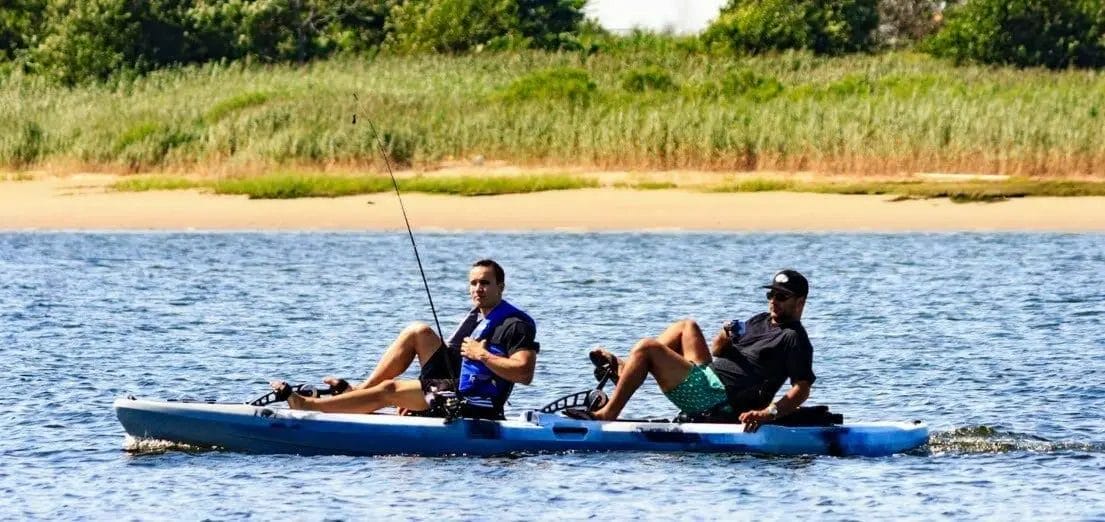
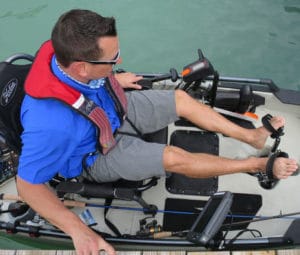
If you haven’t been keeping up with the latest kayaking trends, you may not know that pedal kayaks are actually picking up a lot of steam. There are actually a couple of reasons – they’ve become a tad cheaper, they’re very practical and simple to use, and they give you quite a few advantages over a regular kayak.
However, not everything is perfect, and not everyone loves them. To begin with, “purists” shrug at the thought of even attaching pedals to your kayak, or any other method of assistance for that matter. However, that train of thought means that they’re missing out – not you. And then we have people who are too concerned with potential issues with a pedal kayak to even give it a good thought and consider how to solve those issues. One of those issues is keeping the pedal drive system clean and working well, while the other one is how to launch a pedal kayak from the shore, when you have a whole mechanism sticking out from under it.
While the former actually depends on the kayak manufacturer, and how they chose to incorporate their respective system, the latter is, to be honest, quite easy. All it takes is a few steps, and it’s much less of a process than you would think. That’s what we’ll be discussing today, as we take a look at a few tips on how to launch a pedal kayak from the shore, to make your life easier.
Choosing a pedal kayak? Check out our guide below!
https://kayakingjournal.com/best-pedal-kayak/
To begin with, make sure your pedal drive is adjusted well
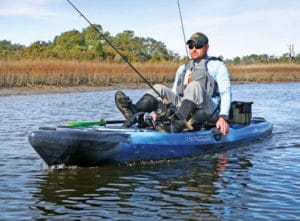
This is something we couldn’t emphasize enough. Whether it’s for pedaling your kayak, or just for launching it, it is crucial that you know your kayak is adjusted well for your body type and position. It is very easy to do so, just follow the few steps below.
To begin with, spend a full day adjusting the pedals and the seat. The pedals are simple – at the end of each pedal stroke, you should have your leg bent slightly at the knee. If you don’t adjust well, and have a straight knee, your leg pauses on each stroke, and you’re actually losing speed and pedaling consistency. On the other end of the spectrum, a deeply bent knee is an issue as well.
Next, you have the seat angle. A starting point would be perfectly upright, as leaning it too far back or forward puts a lot of unnecessary strain on your shoulders and lower back. To further make things easier, you could add lumbar support to your saddle, such as a pool noodle or a foam cushion.
To adjust the fit, you should have both the saddle at a good position, and the pedals just right. Many pedal drive systems offer quite a few options in terms of adjustability, so you can be pretty sure that you’ll get things right at one point.
Let’s see how you launch the kayak from the shore
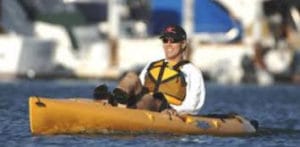
When you have things adjusted just right, you can get on to actually launching the kayak. As we said, the primary concern when you have a pedal drive system is height. In water too shallow, you could be worried about the fins, rudder or propeller (depending on your specific system) hitting the bottom. This could spell disaster, or at the very least, seriously scratch your system.
What some people don’t know is that most, if not all, pedal drive manufacturers offer one way or another of temporarily disengaging, or lifting up the system. This applies to both aftermarket pedal drive makers, and ones that make their own kayaks with a pedal drive. To demonstrate one of the systems, we’ll talk about Hobie’s MirageDrive. It’s one of the better systems out there, and it has solved this issue in an excellent way.
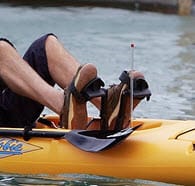
The MirageDrive system uses fins instead of a propeller. Both the ST and the ST Turbo fins have roller bearings for lower resistance, and they work admirably. They require around 18” of depth, though, so what we’re talking about is an issue here.
To combat this, to begin with, if you have one pedal arm completely extended forward, the fins flatten out against the hull’s base. This means you only have an inch or two sticking out at the bottom – ideal for launching from the shore, or for coming to land. But when you’re launching, you might not be in the kayak. Therefore, Hobie have also made it possible to keep the flattened fin position without using your leg. There’s a plastic hook attached to the deck’s bungee cord. Just hook it around a pedal arm, and the fins remain retracted. Oh, and the bungee cord’s length is adjustable, so you can set it up easily.
There’s another nifty feature with Hobie. Even with the fins flattened out, it’s still possible to achieve propulsion. All you have to do is do short pedal strokes instead of full ones, and the fins flutter while remaining in a flattened position. This lets you start moving while the water is still shallow when launching, or get over obstacles while moving.
Wrapping things up
Even though we focused on Hobie, their MirageDrive is far from the only pedal powered system on the market right now. There’s also Native Watercraft’s Propel Drive, Old Town Kayaks’ PDL Drive, as well as Perception’s Pilot Drive. They all offer some form of retraction, so you shouldn’t have to worry about any of them when you’re launching.
The safest bet, if you want to be sure you’re good is to check the manual of your respective kayak. It’s bound to contain some information as to how to use the pedal drive system, and how to retract it to make sure that it doesn’t get damaged when you’re launching your pedal kayak from the shore.
